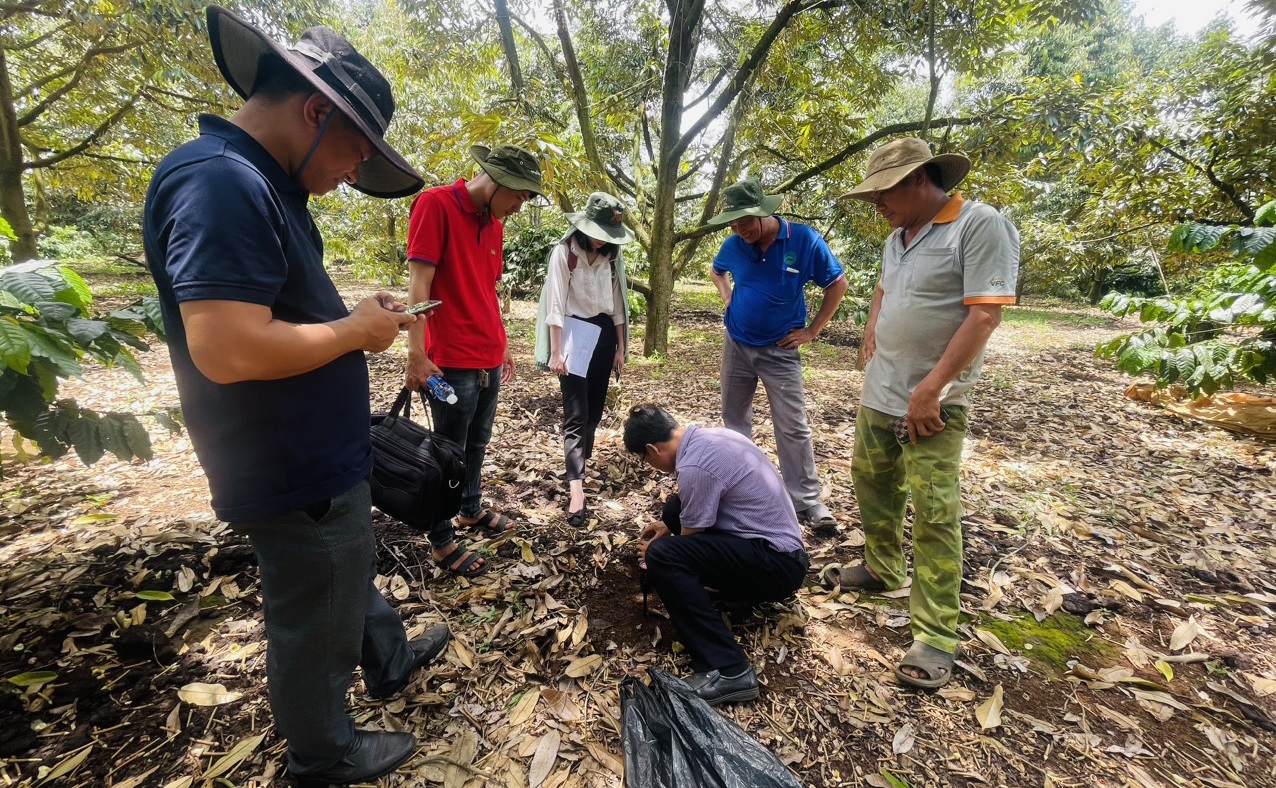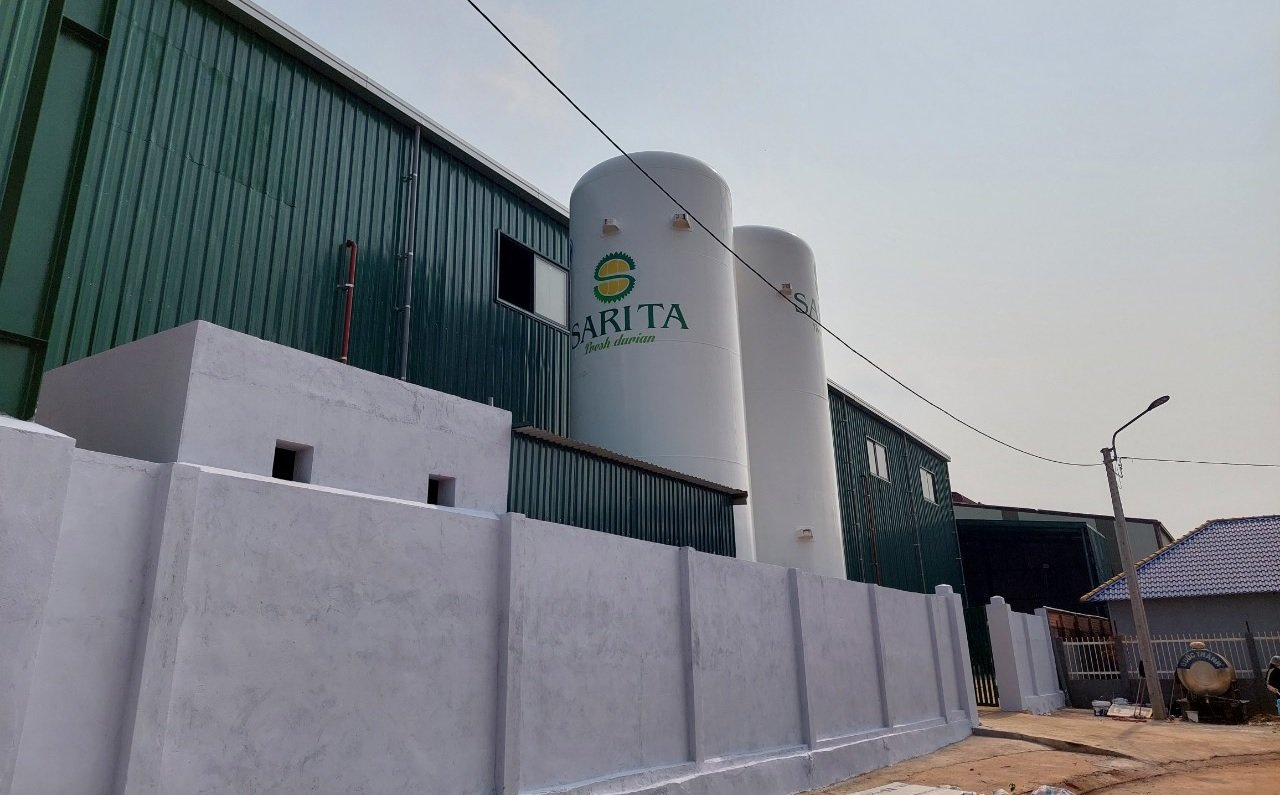June 18, 2025 | 22:43 GMT +7
June 18, 2025 | 22:43 GMT +7
Hotline: 0913.378.918
June 18, 2025 | 22:43 GMT +7
Hotline: 0913.378.918
In 2022 durian output of the Central Highlands reached 130,000 tons. It is forecasted that in the next 2 years the output will increase by 50% compared to that time. The Central Highlands provinces are strongly increasing the area of durian cultivation at present. An increase in production area will provide a large fruit yield, far exceeding the market demand, thus putting great pressure on output. These are the problems that durian will face in the next 3-5 years.
According to Mr. Vu Phi Ho, Chairman of the Board of Directors of Tay Nguyen Durian Joint Stock Company (SARITA), when the output is large, the market will no longer be stable in terms of price. And from that, the problem of “good harvest, bad price” will return to the durian trees. “The time to sell durian is only 15 days from the date the durian is cut and brought down. In the context of the high selling pressure, if the durian is not cut at the right time, people would sell it at any price to recover capital”.

The current peeled durian product still has great potential. Photo: Tam An.
Peeling is considered another option, but there would be immense financial pressure on enterprises. Selling the fruit fresh means that enterprises can recover capital quickly but lose profits, while peeled durian has a great demand on cold storage. Consumers tend to choose fresh fruits before frozen durian products, so frozen products must be kept in storage for one year before being put on the market.
Regarding the output of peeled durian, 60,000 tons of fruit equals 20,000 tons of products. If converted into money, it will fall to approximately VND 1,800 billion. This is not a small number. Having this amount of peeled output, the accompanying cold storage system must also be large. However, at present, the storage capacity in the Central Highlands is less than 2,000 tons. Localities are required to find logistics units that match the characteristics of the peeled durian industry, thereby increasing the value and creating benefits for this product.
Mr. Ho added, “In order for this product to have a foothold and sell at a high price, we need to change the perception of businesses as well as people because the potential of this product line is great”.
Mr. Ho said that it is not that Vietnamese durian is not delicious, but it is because of the wrong choice of segment, technology and way of entering the market.

Technical staff of Tay Nguyen Durian JSC took soil samples to test the associated gardens. Photo: Tam An.
For example, in Thailand, durian is a national brand, so the country uses the law. This is how the Thai people manage the durian industry. For Vietnam, improving the quality of durian in the Central Highlands in particular and the country in general remains an extremely complicated matter. So far, Vietnam’s durian industry follows the process from gardeners, traders, companies and finally to Chinese traders. In a sense, Chinese traders are the ones who decide the market flow.
Currently, the price of Thai durian sold in China is more than 1,000 yuan/barrel (18 kg) while Vietnam's durian sells at only 900 yuan/barrel. Since then, consumers have rated Vietnamese goods as “market goods”, the lowest type in the market. Durian is not currently considered a national brand product, so this industry has not received adequate investment. Seeing the above issues, SARITA was established with the policy of “using Vietnamese brand names of Vietnamese people” to make a stand in the Chinese market.

Tay Nguyen Durian Joint Stock Company invests in nitrogen freezing technology to improve the quality of peeled durians. Photo: Tam An.
SARITA walks on an independent path, separated from the structure through traders. The company signs a contract with a Chinese partner, and this partner will be a sales agent and enjoy commissions on each product.
SARITA aims to raise the quality of peeled durian up to US standards. To be more specific, the company focuses on using nitrogen freezing technology for peeled durian. Accelerating the freezing speed will help the durian fruit not lose water, and the structure of the flesh remains intact.
In SARITA’s vision, elevating the value of durian must start with growers. “Technology cannot make durian delicious. Whether durian is delicious or not is up to the grower. Growers who wish to have good durian fruit must have farming techniques, plans for plant nutrition, spraying process, and secure field sanitation," said Mr. Ho.

SARITA Company provides capital support for durian farmers. Photo: Tam An.
To help growers in the area, SARITA is currently developing a standard durian cultivation procedure. Gardens that cooperate with SARITA are supported by the unit's technical team.
SARITA considered digitizing the garden the first important step of all new generation agriculture. If this is implemented smoothly, it will help the Central Highlands durian industry in particular and the whole country in general improve the quality and professionalism. “The unit also built a team of 10 IT staff to digitize the planting area. All data from durian cultivation and harvesting will be put on the digital platform," said Mr. Ho.
Translated by Samuel Pham
/2025/06/17/3942-2-143243_548.jpg)
(VAN) Recently, in Sweden, the Secretary of the Binh Dinh Provincial Party Committee presented the Investment Registration Certificate for the 'Polyester Fabric Recycling Complex' project to SYRE Impact-AB Company.
/2025/06/12/3721-2-202745_83.jpg)
(VAN) TH made an impression at Seoul Food 2025 with its line of natural beverages, paving the way for Vietnamese food products to enter the South Korean market.

(VAN) Soc Trang's success in rice exports stems from a strategy of developing fragrant and specialty rice cultivation areas and standardizing production toward low-emission practices.
/2025/06/11/1311-5-120811_839.jpg)
(VAN) The pig farming industry is facing the challenge of comprehensive restructuring to meet requirements for quality, safety, traceability, and market expansion both domestically and for export.

(VAN) Vietnam considers participating in ALGROALBA in order to expand agricultural production, coordinate the assessment and effective exploitation potential land.
/2025/06/05/5314-1-184727_407.jpg)
(VAN) From seemingly worthless fish scales and skin, enzymes and lactic ferments can transform by-products into peptides, opening a sustainable, effective business direction and elevating Vietnamese seafood.

(VAN) TTC AgriS and IFC signed a strategic partnership to develop a sustainable agricultural value chain, aiming to achieve the Net Zero target by 2035.